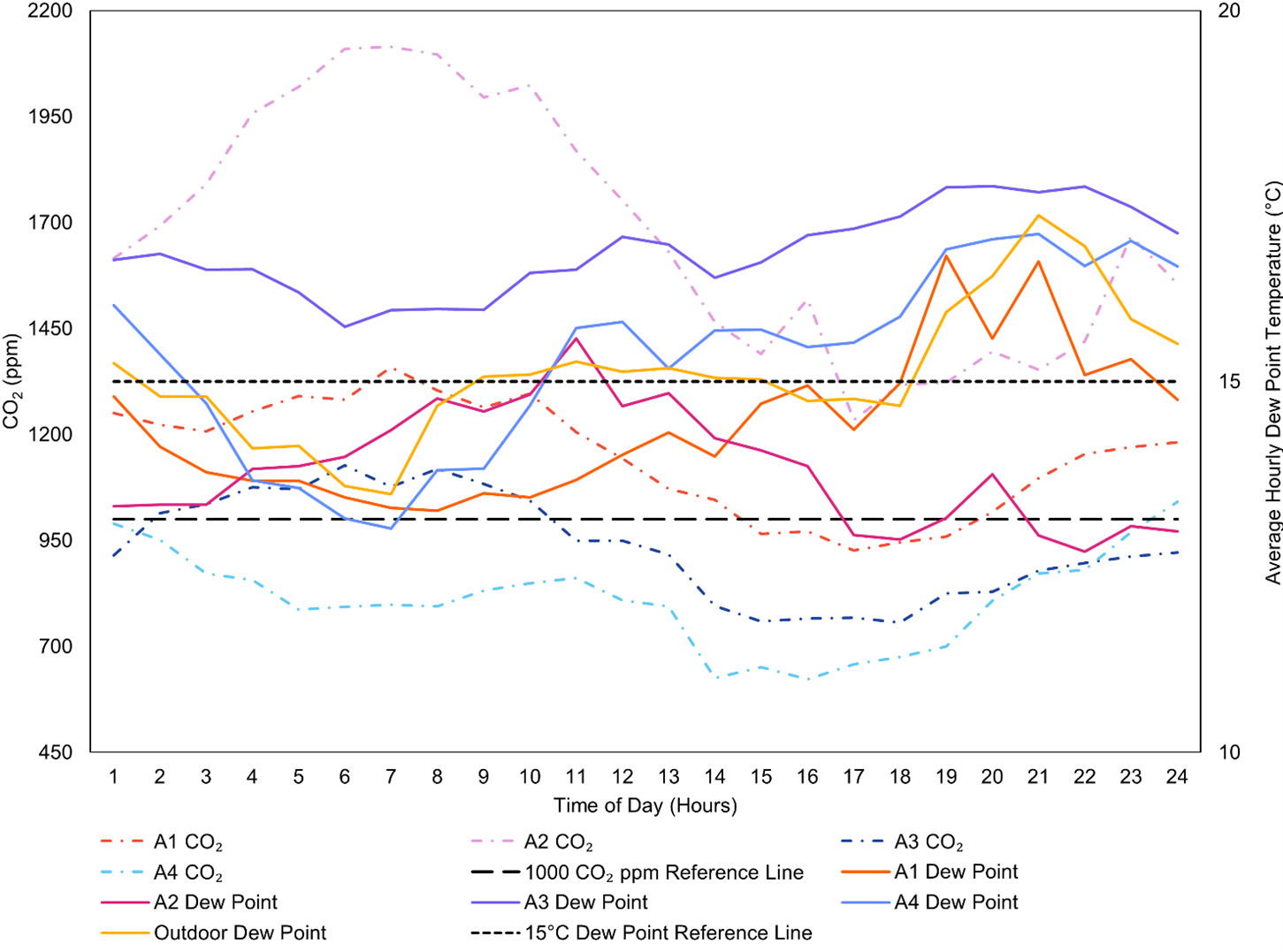BUILDING SCIENCE
Odel Linetska—Alumni Achievement Award
![]()
Odel Linetska—Alumni Achievement Award

About the Award
For overall achievement, contribution, and commitment to the Building Science Graduate Program.
Assessing Housing Conditions in Two On-Reserve First Nations Communities in Saskatchewan
MASc Building Science
Supervisor: Dr. Helen Stopps
Abstract:
First Nations on-reserve housing faces significant indoor environmental quality (IEQ) challenges stemming from overcrowding, poor construction practices, and insufficient ventilation, all of which elevate health risks and compromise building durability. This thesis examines IEQ conditions across two First Nations communities in northern Saskatchewan through a mixed-methods approach that integrates short-term indoor condition monitoring (temperature, relative humidity, carbon dioxide) with visual inspection. Monitoring conducted in one of the communities revealed carbon dioxide (CO₂) concentrations that consistently surpassed Health Canada recommendations during a 14-day monitoring period, demonstrating insufficient air exchange rates. Visual assessments conducted across both communities documented ongoing moisture-related deterioration of building envelopes and significant construction defects, including inadequately sealed building transitions, discontinuous insulation and barrier system (air and vapour), as well as improvised water barriers. This research highlights the critical need for improved construction quality, ongoing performance monitoring, and culturally appropriate retrofit approaches.
Findings:
Analysis of the collected data identifies several recurring deficiencies that impact IEQ, which are shaped by the overall building quality and overcrowded housing conditions, leading to further moisture management issues in the housing. Key findings include:
Overall Building Quality
Overcrowded Living Conditions
Interior Moisture Management
Mould growth is prevalent on gypsum wallboard throughout all the homes, occurring not only in high-humidity rooms.
In completing this research, Odel shared the findings with the communities and presented them at the ASHRAE IEQ Conference in Montreal in September 2025 and the Safe and Affordable Housing Conference in Calgary in November 2025. She continues to collaborate with both communities as part of her PhD research.
For overall achievement, contribution, and commitment to the Building Science Graduate Program.
Assessing Housing Conditions in Two On-Reserve First Nations Communities in Saskatchewan
MASc Building Science
Supervisor: Dr. Helen Stopps
Abstract:
First Nations on-reserve housing faces significant indoor environmental quality (IEQ) challenges stemming from overcrowding, poor construction practices, and insufficient ventilation, all of which elevate health risks and compromise building durability. This thesis examines IEQ conditions across two First Nations communities in northern Saskatchewan through a mixed-methods approach that integrates short-term indoor condition monitoring (temperature, relative humidity, carbon dioxide) with visual inspection. Monitoring conducted in one of the communities revealed carbon dioxide (CO₂) concentrations that consistently surpassed Health Canada recommendations during a 14-day monitoring period, demonstrating insufficient air exchange rates. Visual assessments conducted across both communities documented ongoing moisture-related deterioration of building envelopes and significant construction defects, including inadequately sealed building transitions, discontinuous insulation and barrier system (air and vapour), as well as improvised water barriers. This research highlights the critical need for improved construction quality, ongoing performance monitoring, and culturally appropriate retrofit approaches.
Findings:
Analysis of the collected data identifies several recurring deficiencies that impact IEQ, which are shaped by the overall building quality and overcrowded housing conditions, leading to further moisture management issues in the housing. Key findings include:
Overall Building Quality
- Building envelope detailing is poor in both communities (CA and CB), evidenced by extensive water intrusion at critical interfaces.
-
Lack of continuous air, water, and thermal layers.
-
Windows are frequently cracked or broken panes and broken sashes.
-
Basement walls include a class one vapour retarder on the interior wall.
Overcrowded Living Conditions
- Both communities exhibit overcrowding, demonstrated through elevated CO2 measurements in CA and direct occupancy data in CB showing excessive numbers of residents per unit.
-
It is observed that older housing is associated with higher occupancy.
-
Trend of lower housing built in recent years, with the average construction year being 1994.
Interior Moisture Management
Mould growth is prevalent on gypsum wallboard throughout all the homes, occurring not only in high-humidity rooms.
In completing this research, Odel shared the findings with the communities and presented them at the ASHRAE IEQ Conference in Montreal in September 2025 and the Safe and Affordable Housing Conference in Calgary in November 2025. She continues to collaborate with both communities as part of her PhD research.





